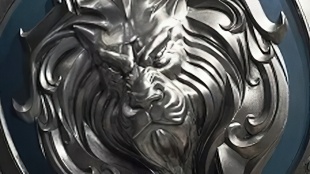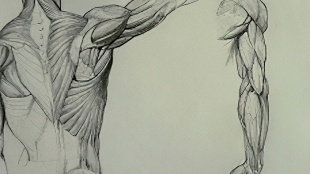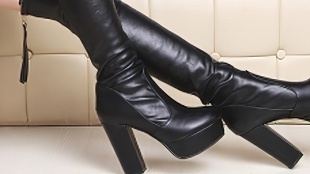您需要 登录 才可以下载或查看,没有账号?注册

x
 [翻译] : Sorry!Error [翻译] : Sorry!Error
本帖最后由 Oliver_Ward 于 2022-6-18 02:43 编辑
-授权微元素发布-
https://oliverward.artstation.com/
I recently had the pleasure of talking about a recent project of mine in an 80 Level interview. In the article I break down some of the processes and techniques I used to create the model, textures and final rendered images. You can find the article in the link below:我最近有幸在一次 80 Level 的采访中谈到了我最近的一个项目。在本文中,我分解了一些用于创建模型、纹理和最终渲染图像的过程和技术。您可以在以下链接中找到文章:
An aspiring 3D Artist Oliver Ward has discussed the Vietnamese Stove project, explained how the stove itself was created, and showed us the workflow behind the beans material.
一位有抱负的 3D 艺术家 Oliver Ward 讨论了越南炉子项目,解释了炉子本身是如何创建的,并向我们展示了豆类材料背后的工作流程。

IntroductionHello everyone, my name is Oliver Ward and I’m currently in my 3rd year of studying Games Art & Design at Norwich University Of The Arts. I’ve enjoyed making digital art for a long time, with some of my earliest ‘artworks’ being created in an animation app on my old Nintendo DS from when I was a child. Then the release of the 3DS allowed me to quite literally create 3D art on another painting app that I downloaded. This then led me to study Games Art & And Animation at both college for 3 years, and now university for an additional 3 years. Throughout the 6 years on both of these courses I’ve juggled coursework and personal projects, and have learned lots both technically and creatively as a 3D artist. 介绍大家好,我的名字是 Oliver Ward,我目前正在诺里奇艺术大学学习游戏艺术与设计的第三年。很长一段时间以来,我一直很喜欢制作数字艺术,我最早的一些“艺术作品”是在我小时候在我的旧 Nintendo DS 上的动画应用程序中创作的。然后 3DS 的发布让我可以在我下载的另一个绘画应用程序上创建 3D 艺术。这导致我在这两所大学学习了 3 年的游戏艺术和动画,现在又在大学学习了 3 年。在这两门课程的 6 年中,我兼顾了课程作业和个人项目,并且作为 3D 艺术家在技术和创造性方面学到了很多东西。

I used the recent lockdowns of 2020 as a good opportunity to spend way too long at my desk and self-teaching myself various softwares and techniques. I really pushed myself out of my comfort zone by doing projects such as a creature sculpt in ZBrush and modeling an old BMW car in Maya. These didn’t turn out as the most successful pieces, however, taught me almost everything I know today. I have worked on several different projects since these, and have been applying all the knowledge I have collected to them. 我利用最近 2020 年的封锁作为一个很好的机会,在办公桌前花费了太长时间,并自学了各种软件和技术。通过在 ZBrush 中进行生物造型和在 Maya 中为老式宝马汽车建模等项目,我真的把自己推离了舒适区。这些并没有成为最成功的作品,然而,几乎教会了我今天所知道的一切。从那以后,我参与了几个不同的项目,并将我收集到的所有知识应用到他们身上。 In this article, I am happily showing you my project: The Vietnamese Stove. Showing you my workflow and anything that I think can be of value to share. 在本文中,我很高兴向您展示我的项目:越南火炉。向您展示我的工作流程以及我认为值得分享的任何内容。
Pre-Production前期制作
Through experiences in previous projects in the past, I have realized that problems usually stem from rushing the pre-production stages. Finding a strong collection of reference imagery and thinking about your final composition early on is something I think that is really important. 通过过去的项目经验,我意识到问题通常源于匆忙的前期制作阶段。找到一个强大的参考图像集合并尽早考虑你的最终构图是我认为非常重要的事情。 I spent a good day searching through any ideas that came into my head. Usually, I like to search and look through websites such as Pinterest and Google. I initially search for something quite broad, such as a certain time period or even an event that happened in the past which interests me. I then save anything that interests me and compare the choices until I’ve found one I really like. 我花了一整天的时间来搜索我脑海中出现的任何想法。通常,我喜欢搜索和浏览 Pinterest 和 Google 等网站。我最初搜索的内容相当广泛,例如某个时间段,甚至是过去发生的我感兴趣的事件。然后我保存任何我感兴趣的东西并比较选择,直到找到我真正喜欢的一个。 Once I had found the Vietnamese Stove idea, I then returned to Pinterest and Google to find high-quality reference images of the model. YouTube is also a great resource at this stage, videos such as disassembly videos of the model are very helpful. From all this time spent researching, I compile everything into one big reference board on Photoshop. With sections for certain parts of the model.
一旦我找到了越南火炉的想法,然后我回到 Pinterest 和谷歌寻找模型的高质量参考图像。YouTube在这个阶段也是一个很好的资源,模型的拆卸视频等视频非常有帮助。在所有这些研究中,我将所有内容都编译到 Photoshop 上的一个大参考板上。带有模型某些部分的部分。
This board is something I’ll look at throughout the project, as it not only helps with the initial modeling but also the texturing and rendering stages too. 这个板是我在整个项目中都会看到的东西,因为它不仅有助于初始建模,还有助于纹理和渲染阶段。
High Poly高聚
I started modeling by choosing a flat image of the stove that I can import into Maya as a guide for scale. I put this on an image plane and almost trace the image with the 3D model that I’m making. This makes sure that each piece is scaled correctly and you don’t get one piece looking bigger than the other. 我通过选择可以导入到 Maya 中作为比例指南的火炉的平面图像开始建模。我把它放在一个图像平面上,几乎用我正在制作的 3D 模型跟踪图像。这可以确保每个部分都正确缩放,并且您不会让一个部分看起来比另一部分大。 There were a lot of curved surfaces in the stove model, so I was conscious of checking back and forth between my SubDivision modes to quickly catch any slight pinching or uneven surfaces. 炉子模型中有很多曲面,所以我有意识地在我的细分模式之间来回检查,以快速捕捉任何轻微的挤压或不平整的表面。 I think it’s also crucial to think forward when doing the high poly model as well. For example, when I was modeling the moveable feet and arms of the stove, I had to think forward to the animation stage. If they’re scaled slightly wrong they can overlap when they retract during the animation. So I, therefore, made sure to keep on checking this by folding them in and out. 我认为在制作高多边形模型时向前思考也很重要。例如,当我在为炉子的可移动脚和手臂建模时,我不得不提前考虑到动画阶段。如果它们的缩放比例稍有错误,它们在动画期间缩回时可能会重叠。因此,我确保通过将它们折叠起来继续检查这一点。 I tend to stick to a small array of tools within Maya when modeling, these include the likes of the Multi-Cut and Circularize tools. I find the duplicate special tool especially helpful for evenly spacing out repeating objects. 在建模时,我倾向于使用 Maya 中的一小部分工具,其中包括 Multi-Cut 和 Circularize 工具。我发现重复的特殊工具对于均匀间隔重复对象特别有用。 Low Poly低聚
The goal of this small project was to ultimately create a collection of 2D renders. I still wanted to optimize it for a game, but I also increased my polygon budget considerably to fit with the brief I had. I didn’t want any sharp or jagged curves to stand out and break the illusion of realism. 这个小项目的目标是最终创建一个 2D 渲染集合。我仍然想为游戏优化它,但我也大大增加了我的多边形预算以适应我的简报。我不希望任何尖锐或锯齿状的曲线突出并打破现实主义的幻觉。 Retopology is something that I find can never be rushed, and if I ever do, it results in a bad bake and restarting the whole process. I like to instead put on my headphones and just go by the process piece by piece. This way it gives me a list I can work down and feels like I'm slowly making progress as I tick each one off. 重新拓扑是我发现永远不能匆忙的事情,如果我这样做了,它会导致烘焙失败并重新启动整个过程。我喜欢戴上耳机,一步一步地进行。通过这种方式,它给了我一个我可以写下来的清单,并且感觉就像我在每一个都打勾时正在慢慢取得进展。 Ideally, I like to use the high topology mesh as much as I can when retopologizing. One way is by using the lower SubDivision of the mesh and removing the supporting edge loops that I don't need, as well as rounding off any sharp edges. Another way is also by SubDividing the high poly model and then reducing its polygons either by hand or more commonly by the Reduce tool in Maya. This doesn’t work on every model but I find for a lot of shapes it’s a great way of getting an accurate shape. 理想情况下,我喜欢在重新拓扑时尽可能多地使用高拓扑网格。一种方法是使用网格的较低 SubDivision 并删除我不需要的支撑边缘循环,以及修整任何锋利的边缘。另一种方法是对高多边形模型进行细分,然后手动减少其多边形,或者更常见的是使用 Maya 中的缩减工具。这不适用于每个模型,但我发现对于很多形状来说,这是获得准确形状的好方法。
UVs紫外线
I also think that doing the UVs is generally a similar process to retopologizing. Once again, I work down the list of objects working one by one. My workflow here is to split my viewports inside of Maya, having the UV editor, perspective viewport, and UV toolkit tabs all open at once. This gives me all the tools I need to be laid out in front of me. 我还认为进行 UV 通常与重新拓扑类似。再一次,我一个一个地处理工作对象的列表。我的工作流程是在 Maya 中拆分我的视口,同时打开 UV 编辑器、透视视口和 UV 工具包选项卡。这为我提供了摆在我面前的所有工具。 It’s good to always be conscious of prioritizing the faces and parts of the mesh that are more visible, as opposed to the faces that are almost hidden. Make sure that the key visible faces get plenty of space in the UV set. This is something that I find is easily forgotten but also a really good way of getting more from your textures. 最好始终注意优先考虑网格中更可见的面和部分,而不是几乎隐藏的面。确保关键可见面在 UV 集中获得足够的空间。这是我发现很容易忘记的东西,但也是从纹理中获得更多信息的好方法。 Baking烘烤
Baking is actually something I quite enjoy, seeing the LowPoly mesh suddenly transfer its appearance is something really satisfying to me. For this project, I baked the model inside of Substance 3D Painter. The first couple of bakes I find generally always need tweaking. I think it’s good to be critical at this stage, as it’s much easier to tweak it now rather than when you notice a bad part of the bake halfway through texturing. 烘焙其实是我非常喜欢的事情,看到 LowPoly 网格突然变换它的外观让我非常满意。对于这个项目,我在 Substance 3D Painter 中烘焙了模型。我发现前几次烘烤通常总是需要调整。我认为在这个阶段提出批评是件好事,因为现在调整它比在纹理中途发现烘烤的不良部分要容易得多。 For the bake, I decided that two 4k maps were about right for what I needed. I split it up as 1 map for the stove and then 1 map for the additional assets that I made for the diorama. As this model is also made up of lots of pieces packed tightly together, I made sure to bake with the ‘By Mesh Name’ setting enabled in Substance 3D Painter. This means that Substance will treat each object individually, therefore avoiding any messy baked maps. 对于烘焙,我认为两张 ​​4k 地图正好适合我的需要。我将其拆分为 1 张用于火炉的地图,然后将 1 张用于我为立体模型制作的附加资产的地图。由于这个模型也是由许多紧密组合在一起的部件组成,因此我确保在 Substance 3D Painter 中启用“按网格名称”设置进行烘焙。这意味着 Substance 将单独处理每个对象,从而避免任何混乱的烘焙贴图。 Texturing纹理
Texturing is a stage of the pipeline that I absolutely love. I chose to do it inside of Substance 3D Painter. It’s the part where I can finally start bringing the model to life through fine details and various materials. 纹理是我非常喜欢的管道阶段。我选择在 Substance 3D Painter 中进行。这是我终于可以开始通过精细的细节和各种材料将模型变为现实的部分。 I generally start with the main bulk of the larger textures. For this specific asset, it was clearly the green and silver metal areas of the stove. I think it’s always essential to research the type of material that you’re creating and establish exactly what it is. For the stove, I found out the majority of the metals consisted of types of steel, this acted as a base from which I could build upon a convincing steel material. 我通常从较大纹理的主要部分开始。对于这个特定的资产,显然是炉子的绿色和银色金属区域。我认为研究您正在创建的材料类型并准确确定它是什么总是必不可少的。对于炉子,我发现大部分金属由钢组成,这是我可以在令人信服的钢材上建造的基础。 From further findings, I could see that when parts of the metal get hot, over time they change color slightly. This exposes an orange and blue tint to the metal. I added this naturally to the metal through a low opacity layer, as well as a patchy layer mask. Now especially in animations, the light should pick up these colors as it moves across the surface. 从进一步的发现中,我可以看到当部分金属变热时,随着时间的推移,它们会稍微改变颜色。这会使金属呈现橙色和蓝色色调。我通过低不透明度层和不完整的图层蒙版将其自然地添加到金属中。现在尤其是在动画中,光线在表面上移动时应该会拾取这些颜色。 Thinking about how the stove functions are something that also adds wear to the material. As I’ve previously mentioned, the arms of the stove swing in and out. This swinging motion is sure to create scratches where people are uncareful of it. Adding scratches around these areas adds both character and a sense of realism. I also like to think it creates some kind of story to the asset – being able to imagine someone creating those scratches by folding in the feet and arms. 考虑炉子的功能也会增加材料的磨损。正如我之前提到的,炉子的臂可以进出。这种摆动运动肯定会在人们不注意的地方造成划痕。在这些区域周围添加划痕可以增加个性和真实感。我也喜欢认为它为资产创造了某种故事——能够想象有人通过折叠脚和手臂来创造这些划痕。 General wear and scratches come from more than just swinging in the arms and feet of the stove though. I was careful to consider as many other imperfections to the model as well, some of these include: air bubbles and rips in the stickers, wear, and dirt where the feet of the stove rub against the ground, rust where rainwater can collect in cavities, the chipping of plastic on the dial, as well as many more. 不过,一般磨损和划痕不仅仅是在炉子的手臂和脚上摆动。我也仔细考虑了模型的许多其他缺陷,其中一些包括:贴纸上的气泡和裂口、炉子脚与地面摩擦的磨损和污垢、雨水可以聚集在空腔中的锈迹,表盘上的塑料碎屑等等。 Using Curvature Maps was a great way of placing these grunges where I wanted them. For example, I wanted the tears on the stickers to fall closer to the edges than to the center. To tell Substance 3D Painter to identify the edges of the sticker, I had to use anchor points. Once this was in place I was able to add the Grunge Map of my choice and the Curvature generator to achieve the desired effect. 使用曲率贴图是将这些垃圾放置在我想要的位置的好方法。例如,我希望贴纸上的泪痕更靠近边缘而不是中心。为了让 Substance 3D Painter 识别贴纸的边缘,我必须使用锚点。一旦这到位,我就可以添加我选择的 Grunge Map 和曲率生成器来达到预期的效果。 Creating all of these materials usually consists of making use of Substance 3D Painter’s wide selection of Grunge Maps. I always find it important to make sure that each one is subtly blended into the one before. This is always quite easy to do by adding a levels layer to the grunge map that you use. With a Levels Filter, you can have fine control over what part of the Grunge Map you can and can’t see. Switching to your different material modes is always a good idea to keep up with things. I always like to keep a specific eye on the Roughness channel, as that’s something very important in the final renders.
创建所有这些材料通常包括使用 Substance 3D Painter 的各种 Grunge Maps。我总是发现确保每一个都巧妙地融入之前的那个很重要。通过向您使用的 grunge 地图添加关卡层,这总是很容易做到的。使用级别过滤器,您可以很好地控制您可以看到和看不到的 Grunge Map 的哪些部分。切换到不同的材质模式始终是跟上潮流的好主意。我总是喜欢特别关注粗糙度通道,因为这在最终渲染中非常重要。
I generally stick to similar tools between each project. For this stove project, I found tools such as the anchor points, tile generator, and filters such as blurs and sharpens very helpful. 我通常会在每个项目之间使用类似的工具。对于这个炉子项目,我发现锚点、瓷砖生成器以及模糊和锐化等过滤器非常有用。 Studying materials and thinking about how it’s been used is something I carry through all parts of the texturing process. Combining this with reference imagery of the textures really combines to make a realistic and believable end result. 研究材料并思考它是如何被使用的,是我在纹理处理过程的所有部分中进行的事情。将其与纹理的参考图像相结合,确实可以产生逼真且可信的最终结果。 Baked Beans焗豆
I always find that Substance 3D Designer is a great opportunity to create slightly ‘odd’ materials that you can’t quite create in Photoshop or Substance 3D Painter. As you can imagine, finding reference imagery for beans was a lot easier than finding it for the stove. 我总是发现 Substance 3D Designer 是一个很好的机会来创建您无法在 Photoshop 或 Substance 3D Painter 中创建的稍微“奇怪”的材质。可以想象,找到豆类的参考图像比找到炉子的参考图像要容易得多。 I broke the creation of the beans up into the 3 main parts: Firstly, by creating the cylindrical bean shape by using a mix of warps and polygon nodes. Then by duplicating this shape across the material, to form a seamless pattern. Lastly, by adjusting the final material set up which included refining maps such as the roughness, normal and ambient occlusion. Breaking down Substance 3D Designer materials is always a good idea as the graphs can sometimes seem a little intimidating. 我将 bean 的创建分为 3 个主要部分:首先,通过使用经纱和多边形节点的混合创建圆柱形 bean 形状。然后通过在材料上复制这个形状,形成一个无缝的图案。最后,通过调整最终材质设置,其中包括细化贴图,例如粗糙度、法线和环境光遮挡。分解 Substance 3D Designer 材料总是一个好主意,因为图表有时看起来有点吓人。 Making the beans look as natural as possible was the key to making them look realistic. I tried doing this by using a tile sample node, making sure to increase random values such as the scale, rotation, color, and position to make it look as if they hadn’t just been generated by a computer.
使豆子看起来尽可能自然是使它们看起来逼真的关键。我尝试通过使用平铺示例节点来做到这一点,确保增加随机值,例如比例、旋转、颜色和位置,使其看起来好像不是由计算机生成的。
Rendering渲染
Rendering is really exciting to be able to see the project come together. It’s also something that I think is quite often rushed. I myself have been guilty of taking this final stage too quickly sometimes. All the hard work you did on modeling and texturing the model almost relies on this final part. It serves as an opportunity to highlight your hard work. For this specific render, I decided to do it inside of Marmoset Toolbag 4. I use a similar workflow to most of my projects: 能够看到项目走到一起,渲染真的很令人兴奋。这也是我认为经常匆忙的事情。我自己有时会因为过快地完成最后阶段而感到内疚。您在模型建模和纹理上所做的所有艰苦工作几乎都依赖于这最后一部分。这是一个突出你辛勤工作的机会。对于这个特定的渲染,我决定在 Marmoset Toolbag 4 内部进行。我使用与我的大多数项目类似的工作流程: The texture setup is important to note. I always spend time making sure that the Cavity and Ambient Occlusion Maps are set to the right intensity, as this can really transform your model. Adding SSS is also a great option, I added this to my beans, allowing light to slightly pass through the top layers of sauce. Doing this really brought them to life. 纹理设置很重要。我总是花时间确保将 Cavity 和 Ambient Occlusion Maps 设置为正确的强度,因为这可以真正改变您的模型。添加 SSS 也是一个不错的选择,我将它添加到我的豆子中,让光线略微穿过顶层酱汁。这样做真的让他们栩栩如生 I think composition is almost, if not the most important part of the rendering process. I chose to do mid shots and some closeup shots to show both the asset as a whole and also the texturing work up close. Framing the shot with focal length and depth of field is also a great way of guiding the viewer's eye around your render. I used a focal length of around 60 for most of my renders. I think having a high focal length helped to make my diorama renders look more cinematic. - 我认为构图几乎是渲染过程中最重要的部分,如果不是最重要的部分。我选择了中景和一些特写镜头来展示整个资产以及近距离的纹理工作。用焦距和景深构图也是一种很好的方式来引导观众的视线围绕渲染。我的大部分渲染都使用了 60 左右的焦距。我认为高焦距有助于使我的立体模型渲染看起来更具电影感。
For lighting, I used an HDRI from Marmoset’s selection. I like to add one light and increase its intensity for it to act as an edge light. I usually put a bit of work into this light, making sure it’s not only at the right intensity but also the right sharpness and color. I can then fill in the gaps with other lights until I have a lighting setup that I like. I like to always think that I’m ‘painting with light’ when I do this. - 对于照明,我使用了 Marmoset 选择的 HDRI。我喜欢添加一盏灯并增加其强度,使其充当边缘灯。我通常会在这盏灯上做一些工作,确保它不仅具有正确的强度,而且还有正确的清晰度和颜色。然后我可以用其他灯填补空白,直到我有我喜欢的照明设置。当我这样做时,我总是认为我是在“用光作画”。
Diorama西洋镜
I wanted the diorama to look natural and carry a story within it when you look at it. That's why I added the parts such as the smoke from the cigarette, the falling cards, and the eaten apple. Object placement is something that can bring a scene to life, turning it from a still lifeless image to something with a backstory to it. From just this simple arrangement of assets, you can see that someone has not only cooked beans on that stove but a variety of other things too.
我希望立体模型看起来很自然,并且当你看到它时,它里面有一个故事。这就是为什么我添加了香烟的烟雾、掉落的卡片和吃掉的苹果等部分。对象放置可以使场景栩栩如生,将其从静止无生气的图像转变为具有背景故事的事物。从这个简单的资产安排中,您可以看到有人不仅在那个炉子上煮过豆子,而且还有各种各样的其他东西。
Post-Production后期制作
Post-production is also important to enhance the images you render off. I do this inside of both Marmoset Toolbag 4 and Photoshop. I like to always add a subtle vignette inside of Marmoset, as I think it really helps to frame the asset instead of having just one block color. I like to add chromatic aberration and a subtle grain effect inside of Marmoset. These act as camera imperfections which add to the realism of the end shot. I tend to completely turn off the bloom effect, as I find this effect gives an unnatural look to renders. 后期制作对于增强您渲染的图像也很重要。我在 Marmoset Toolbag 4 和 Photoshop 中都这样做了。我喜欢总是在 Marmoset 内部添加一个微妙的晕影,因为我认为它确实有助于构建资产而不是只有一种块颜色。我喜欢在 Marmoset 中添加色差和微妙的颗粒效果。这些作为相机缺陷,增加了最终镜头的真实感。我倾向于完全关闭绽放效果,因为我发现这种效果会给渲染带来不自然的外观。 The final stage is to import it into Photoshop where I add a Camera Raw Filter. Inside this filter, I adjust values such as exposure, contrast, levels, sharpness, and saturation to get the desired end result. Post-processing settings often vary greatly from project to project, it’s something that takes time and really demands your creative eye to critique every part of the image. However, once I had the desired look I was aiming for, this was about the end of the project. 最后一步是将其导入到 Photoshop 中,在其中添加一个 Camera Raw 滤镜。在此滤镜中,我调整曝光、对比度、色阶、锐度和饱和度等值,以获得所需的最终结果。后期处理设置通常因项目而异,这需要时间,并且确实需要您的创造性眼光来批判图像的每个部分。然而,一旦我有了我想要的外观,这就是项目的结束。 Conclusion结论
To conclude, I’d like to say thank you to 80 Level for giving me the opportunity to write and publish this article. As well as to anyone who has taken the time to read through the page. It means a lot to share something I spend so much time and hard work on. I’m always happy to discuss further opportunities and answer any questions, so please feel free to send me an email or even a message on ArtStation. 最后,我要感谢 80 Level 让我有机会撰写和发表这篇文章。以及任何花时间阅读该页面的人。分享我花了这么多时间和努力工作的东西意味着很多。我总是很乐意讨论更多的机会并回答任何问题,所以请随时给我 发电子邮件,甚至在 ArtStation上给我发消息。
Oliver Ward, 3D Art StudentOliver Ward, 3D 艺术系学生
Interview conducted by Arti SergeevArti Sergeev进行的采访 | 



 [翻译] : Sorry!Error
[翻译] : Sorry!Error 








